
- Details
- Written by: The Barman
- Hits: 867
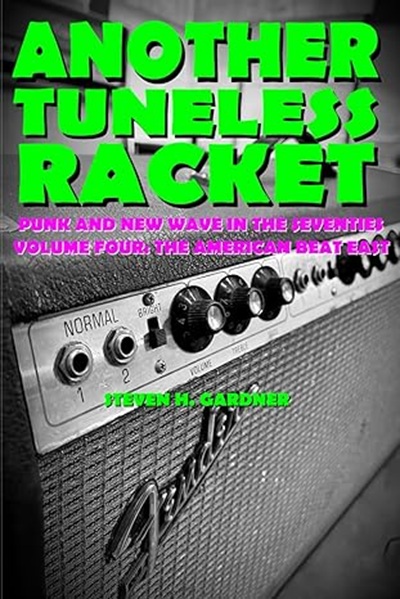 All Another Tuneless Racket. Punk and New Wave In the Seventies Volume Four: The American Beat East
All Another Tuneless Racket. Punk and New Wave In the Seventies Volume Four: The American Beat East
By Stven M Gardner
(Noise For Heroes)
The intention was to read this cover-to-cover before penning a review, but time got the upper hand. As it does. You need to know about it before the onset of the Festive Season proper so you can put it on your Xmas shopping/wish list.
I’ve been dipping into and out of this “Another Tuneless Racket 4” over the past three months. It’s a punk rock “War and Peace” at nearly 690 pages but not a hard slog. It’s neatly compartmented into various regional musical scenes, so “ATR Volume Four” is ideal fodder, if your attention span is short or you want to dip in and out.
Notwithstanding it weighs a lot more than a mobile phone, you might find it essential Toilet Reading (or “Bathroom Reading” for sensitive Americans who think a bathing facility is co-located with what we Australians call The Dunny.)
Reading on the loo is probably a Bloke Thing but certainly not exclusively the domain of men or Australians. The bog is one place most people know they won’t be disturbed.
There’s a bonus if you’re getting on a bit and are not, er, as regular as you used to be, in that you can spend a long time combing these pages. The hefty size of “ATR4” (it’s nearly as heavy as one of those extinct things called phone books) means that if you lift your copy past shouilder height a few times, you can skip the gym.
There’s a lot to be said for Toilet Books. A good one takes your mind off the government bowel testing kit that arrived in the mail and is sitting on your sink, unopened. If you’re a Westerner visiting Japan, reading is less taxing than working out what all those controls on the side of the cistern do.
Unlike Jinglish instructions or medical self-diagnostics, however, “ATR” is a labour of love that comes from Steve Gardcner, the same rock and roll obsessive who spawned the American zine “Noise For Heroes” in the 1990s, and the record label of the same name.
- Details
- Written by: The Barman
- Hits: 7091
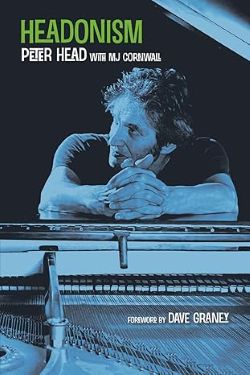 Headonism
Headonism
By Peter Head with MJ Cornwall
(BookPOD)
The history of Australian rock and roll is chockablock with yarns about people who had their shot at The Big Prize. Adelaide-born Peter Head (nee Beagley) gave it a better shake than most, rising to prominence as pianist for prog rockers Headband, touring his bum off and playing in a pre-AC/DC band with some bloke named Bon Scott.
This is a man who rubbed shoulders with everyone from Elton John to John Mayall, John Farnham to the Rolling Stones. Adelaide-raised, Head did what a lot of Aussies did in the‘60s and followed his nose to work as a muso in England...only to suffer the same fate as many, if not most, of his peers and have it rubbed in Pommy squalor.
In the ‘80s Head transplanted himself to Sydney and became a fixture in the piano bars of Kings Cross. It was probably a natural progression for a bloke who kicked off his career as a 13-year-old backing bump-and-grind dancers in seedy Hindley Street bars. Along the way, he directed stage shows, toured nationally with the likes of Robyn Archer, carved out a regular place on the bill of the Adelaide Festival, filled in as backing pianist for “Here’s Humphrey”.
- Details
- Written by: Robert Brokenmouth
- Hits: 7008
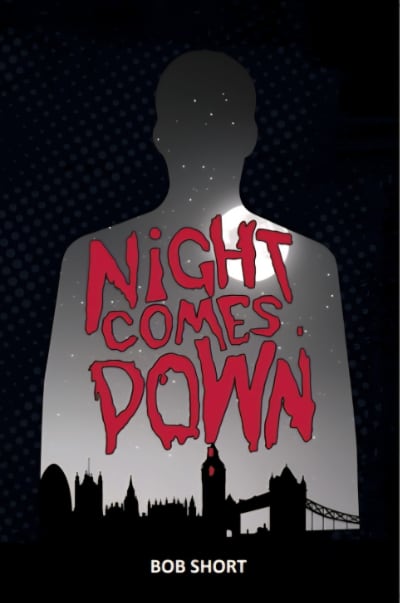 Night Comes Down
Night Comes Down
By Bob Short
(Earth Island Books)
Who could trust time when reason was lost?
I got pretty lucky. I did all the dumb things and I'm still here.
First, it's such a delight to read that I've snorked coffee over it several times in my usual cafe, as well as other unpleasant substances on the bus. So, if it's a horror story, it's one where you spray coffee over it, your table, pants and some lady's nice white frock.
Perhaps you could instead think of “Night Comes Down” as an amusing memoir with layers of horror? No, that won't work, there's just too much real horror.
Even the unreal can still feel like it is real. That hunk of meat in our heads is a totally unreliable narrator. We make excuses for things and pretend things never happened and yet weirdness is always nipping at our heels. Is anything true?
Perhaps you'll read it and think it's all made up. Strangely enough, Bob Short is (as usual) one step ahead of us.
- Details
- Written by: The Barman
- Hits: 6574
 Craic As It Happened
Craic As It Happened
By John Foy
(Past Present Future/Skull Printworks)
Tis the season for confessional show-and-tell Australian music books. Journalist Stuart Coupe had a shot with the entertaining “Shake Some Action”, and then underground label head-turned- mainstream industry publishing chief, Roger Grierson, gave us the rollicking “Lowbrow”. Now it’s John Foy’s turn.
Foy spent many years as a behind-the-scenes operative in the febrile underbelly of the Australian underground music scene. He kicked off in retail, made a mark as a poster designer and then became the driving force behind the Redeye and Blackeye record labels.
Like his mate Roger Grierson, he’s never been a household name, but if you bought or heard a record by Beasts of Bourbon, The Clouds, Deniz Tek, The Crystal Set, The Cruel Sea, Kim Salmon and The Surrealists and even Radio Birdman in the mid ‘80s or early ‘90s, you entered his orbit. Redeye gave the bands wide distribution via a hook-up with the multi-national Polygram/Phonogram major label operation.
- Details
- Written by: The Barman
- Hits: 6250
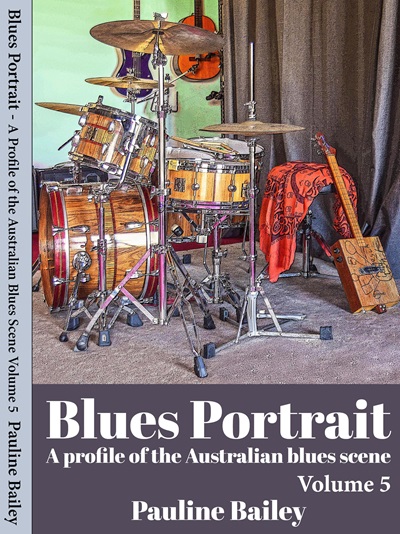 Blues Portrait: A Profile of The Australian Blues Scene Volume 5
Blues Portrait: A Profile of The Australian Blues Scene Volume 5
By Pauline Bailey (Pauline Baileyu Art)
You could call Melbourne visual artist and author Pauline Bailey a “blues preacher” but James Blood Ulmer got there first with an album title. “Blues evangelist” works better anyway.
Pauline’s been self-publishing this series of soft cover “Blues Portrait” books since 2019 but the title is a misnomer. “Blues” is a tag in such broad use that it’s slipped its shackles almost to the point of redundancy. It means many things to most people.
The Blues were born into impoverished and downtrodden circumstances but are better characterised as a feeling than a school of academic thought. As the author points out, there’s traditional blues and there’s music that’s been influenced by the blues, Her books span both.
- Details
- Written by: Robert Brokenmouth
- Hits: 6242
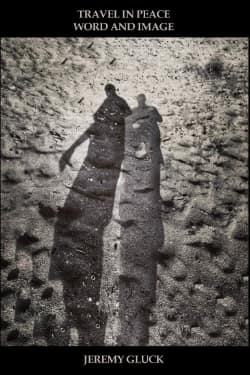 Travel In Peace. Word and Image
Travel In Peace. Word and Image
by Jeremy Gluck
(Incunabula)
You remember the 1970s and 1980s. Band appears with different, infectious single. Then a few more. Then ... they develop, they change direction ... and finally splinter off. Some maintain their creative imperative, releasing occasional (often astonishing) items which don't make the hit parade but... often resonate far more satisfyingly than those callow original singles.
It's as if the relentless click-clack-clatter of their internal engine just cannot be stopped, and they jump tracks in search of a different destination, another way home...
Now, to change the subject completely...
- Details
- Written by: The Barman
- Hits: 7085
 MC5 – An Oral Biography of Rock’s Most Revolutionary Band
MC5 – An Oral Biography of Rock’s Most Revolutionary Band
By Brad Tolinksi, Jann Uhelszki and Ben Edmonds
(Hachette Books)
The MC5 finally made it into the Rock and Roll Hall of Fame in 2024. Or Hall of Lame, as we like to call it around here. As an institution, it really is a clusterfuck of inconsistency and the Five deserved to be there an eon ago.
You might argue that the band’s history, for the most part, was a contradiction of missed, ignored or mis-handled opportunities – and you’d be right. This much-anticipated tome is proof positive – if it were needed – of that.
Decent books about the Five are hard to find. The late Wayne Kramer had a go and succeeded to a degree (although parts smelt of revisionism). Bass player Michael Davis released his own equally harrowing autobiography, posthumously, that filled some gaps. Both books were single viewpoints, however. “MC5 – An Oral Biography…” is a shot at the big picture and fills a vacuum.
- Details
- Written by: The Barman
- Hits: 7286
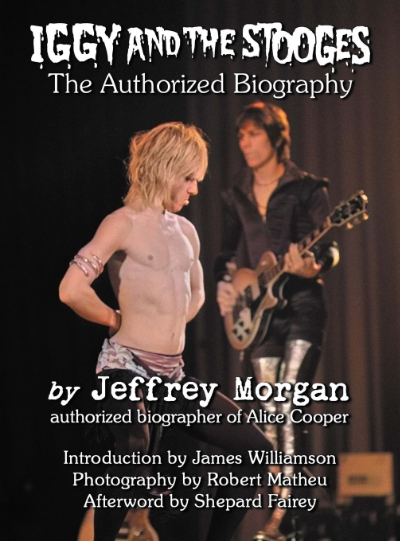 Iggy and The Stooges. The Authorized Biography
Iggy and The Stooges. The Authorized Biography
By Jeffrey Morgan
(New Haven Publishing)
Did we need another Stooges book? Rhetorical question but slap yourself if you answered in the negative. This is a pared-down and re-cut variant of the coffee table format “The Stooges: The Authorized and Illustrated History” published by Abrams in 2009 under the authorship of Jeffrey Morgan and Robert Matheu.
This version is prominently attributed to Morgan although Matheu is acknowledged on the cover and at length throughout.
“Iggy and The Stooges. The Authorised Biography” is still in hardcover and runs to 140 pages as opposed to the original 180-odd. It’s illustrated by the photos of Matheu, John Catto and Jeff Magnum (yes, the onetime Dead Boys bassist) and others, although the reformatting has resulted in much of the original imagery beinbg deleted or replaced.
John Catto’s and Robert Sikora’s 1974 Toronto shots of Iggy and the Stooges are amazing additions but so were Craig Petty’s St Louis photos.
The original book was the brainchild of Morgan and Mattheu after both had been co-opted by Italian uber fan and magazine editor Rosano Ciccarelli to contribute to his own Fun House publication in 2005. They tossed the idea around over some beers, let it slide and revived it a year later with Matheu in the driving seat.
- Details
- Written by: The Barman
- Hits: 7299
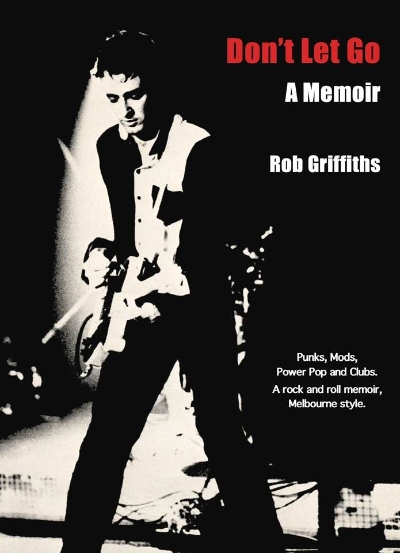 Don’t Let Go. A Memoir – Rob Griffiths (Swerve/Off The Hip)
Don’t Let Go. A Memoir – Rob Griffiths (Swerve/Off The Hip)
He readily confesses to not being a household name but if fervent enthusiasm for rock and roll and a back catalogue of should-have-been-hits counts, Rob Griffiths should be.
Best-known as frontman for onetime Melbourne mod torchbearers Little Murders, Griffiths is one of the most underrated songwriters in the country, and now adds author to his c.v.
The autobiographical “Don’t Let Go” is a ripping ride that cranks up in Melbourne music’s underground of the mid’70s and continues well beyond - as told by an immigrant Pommy kid who jumped in at the deep end.
Griffiths’ first band The Fiction shared stages with Boys Next Door/Birthday Party, News and JAB in a short but noisy existence. Punk was only a starting point: the did wear suits (briefly, at the end) and it was a hint of things to come. Griffiths makes the point well that the lines between genres in Melbourne are, and always were, heavily blurred.
His ‘60s influenced Little Murders rose from The Fiction’s ashes, soaring in popularity on the back of the burgeoning mod movement of the early ‘80s. When both band and the “Quadrophenia” trend foundered, Griffiths became a club DJ, a small-time record label chief and band manager, often in tandem with a day-time career as a schoolteacher.
More Articles …
- Not just a tribute, "Retaliate First" lays it bare
- Disaffected? Dan Denton must be your new fave author
- Tuneless racket? This punk and new wave series is Indispensable
- Superb book proves Florida was once more than a retirement home
- Iggy and the Stooges: The Truth Is In The Book They Made
- As a scribe's tale, it's flamin' groovy
Page 1 of 10
